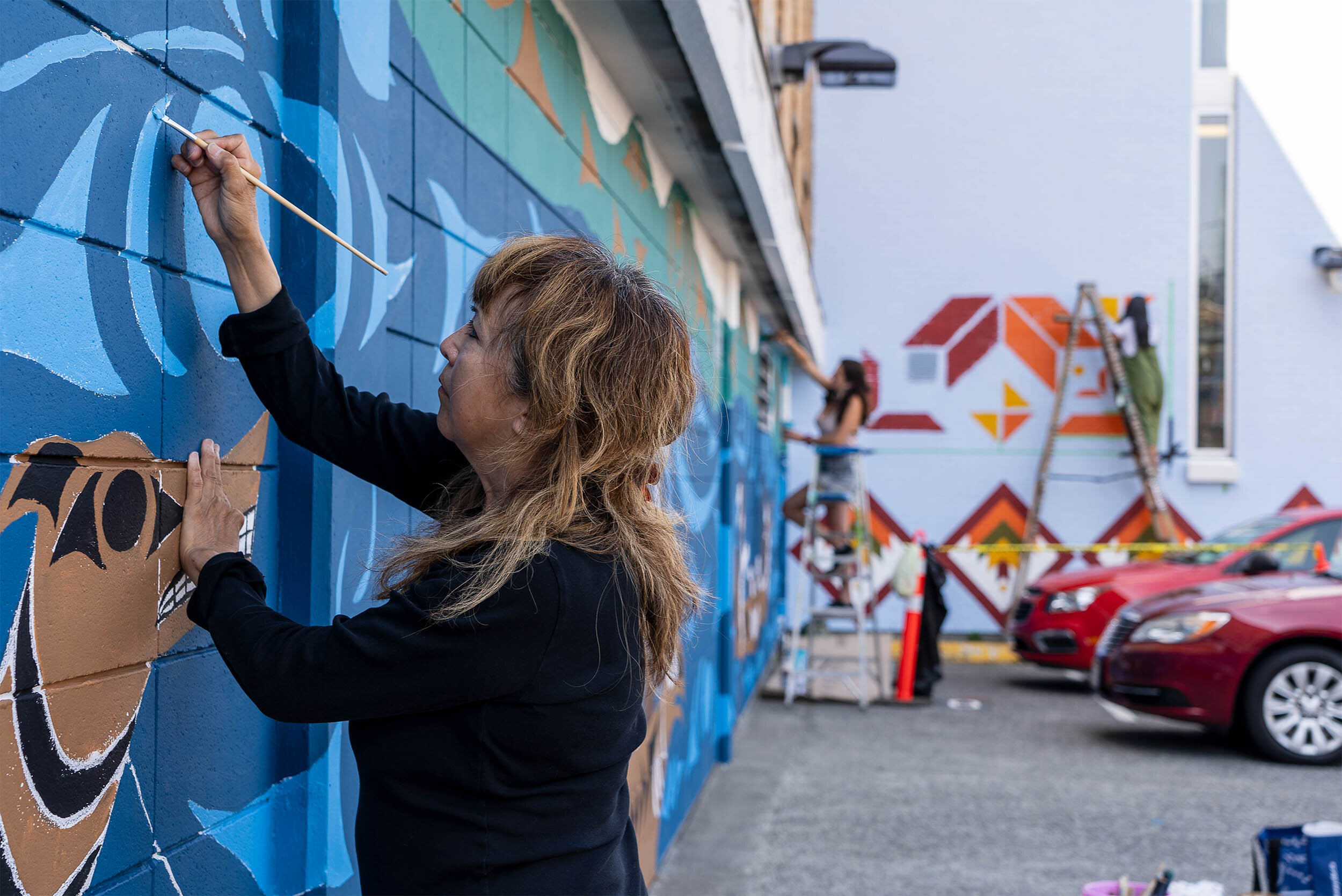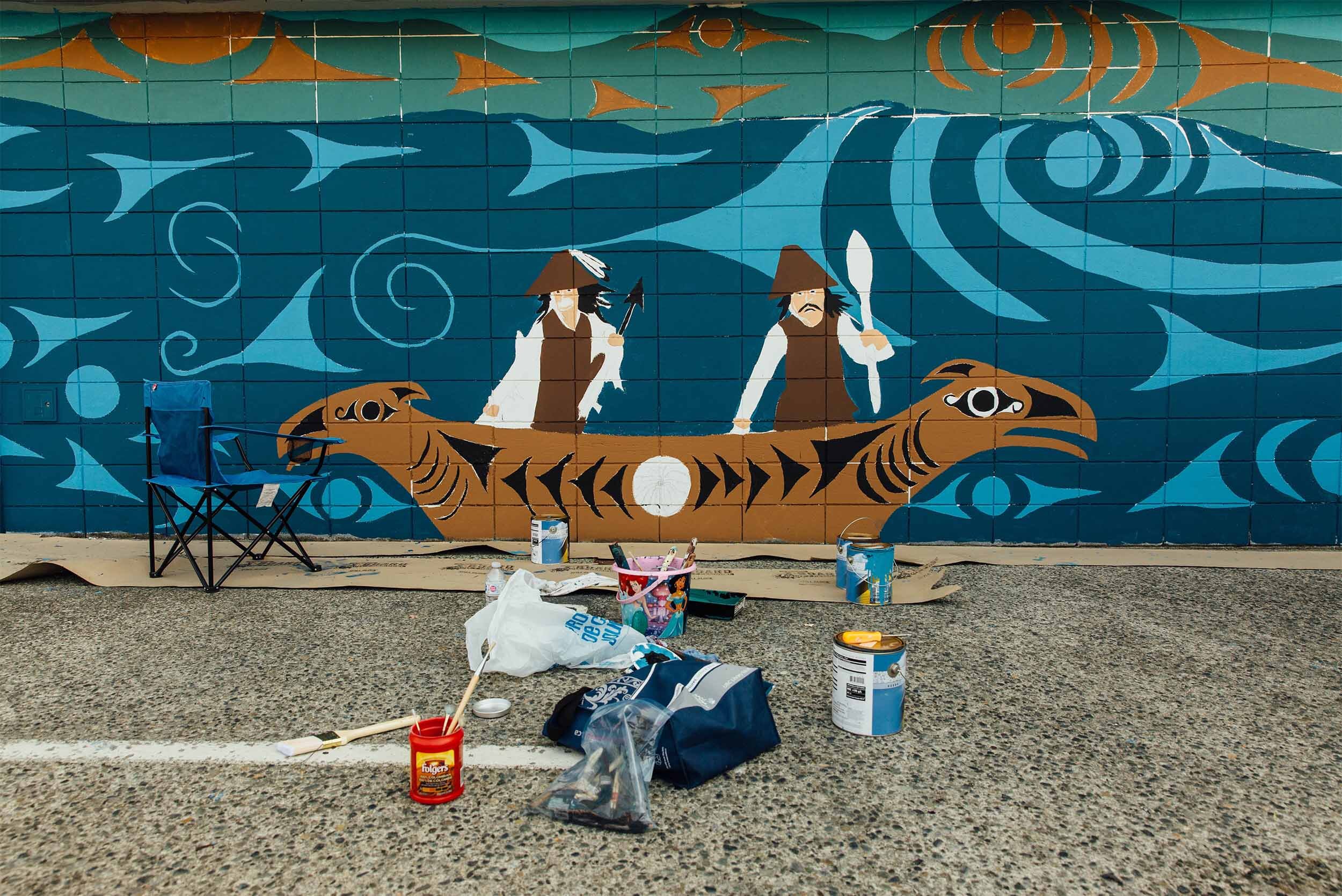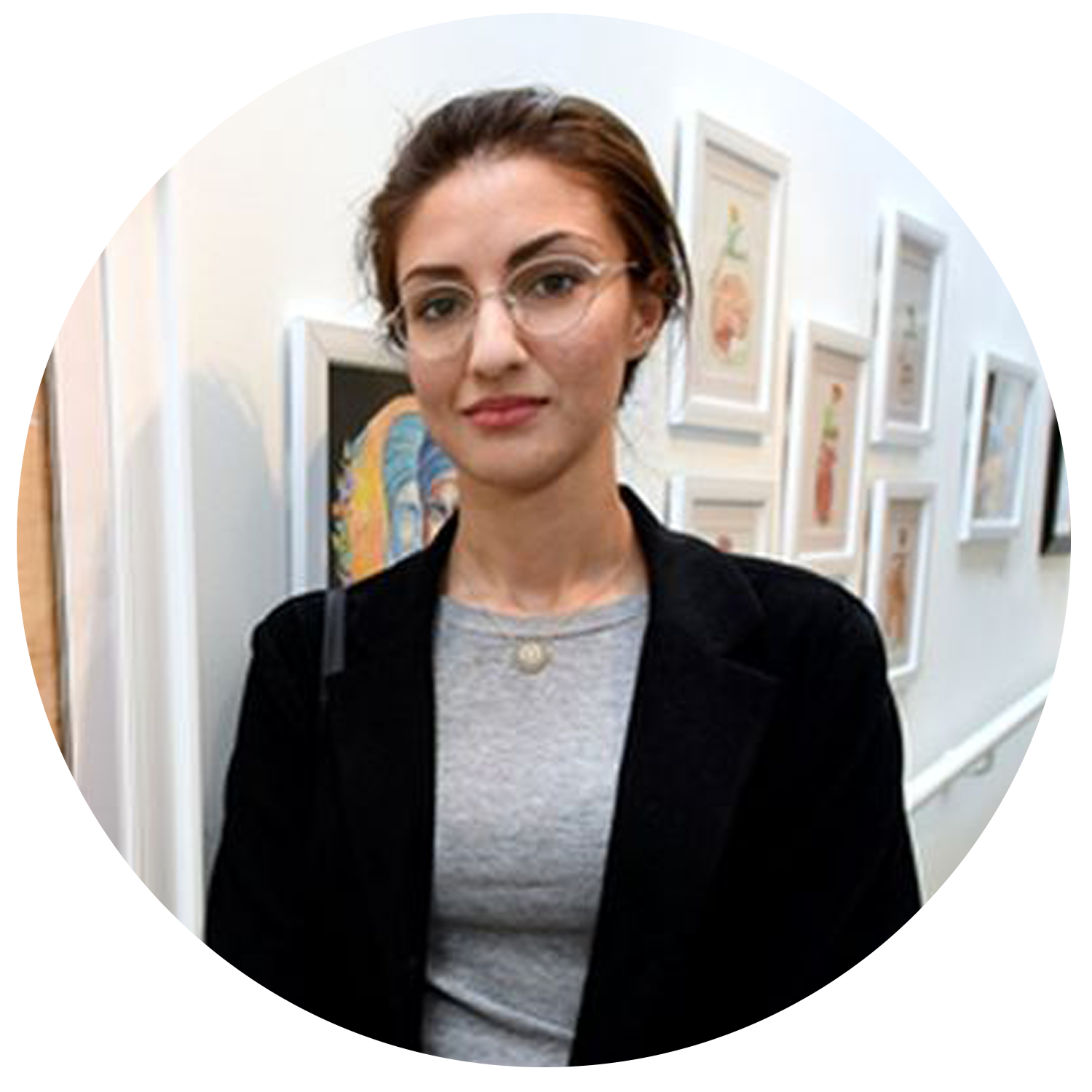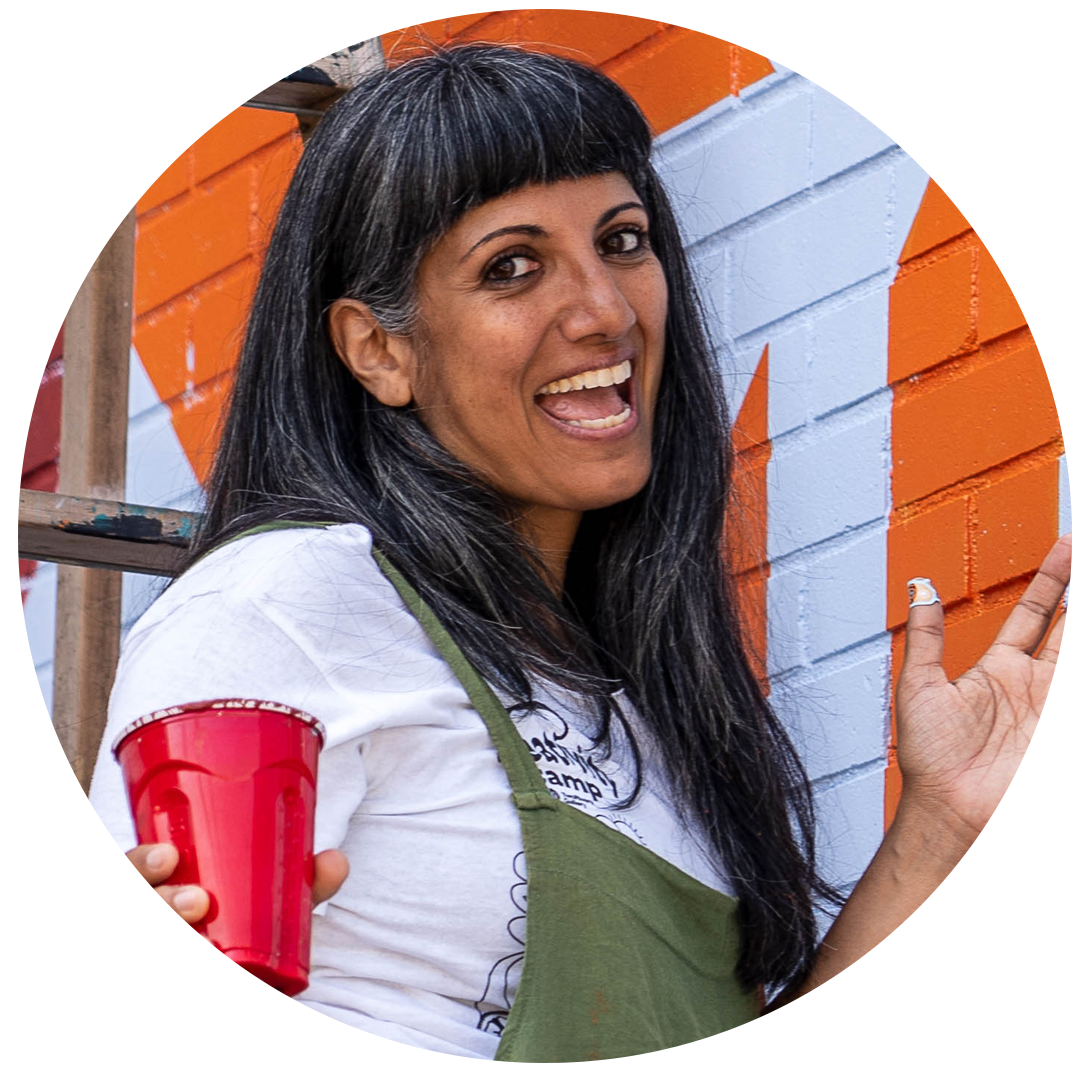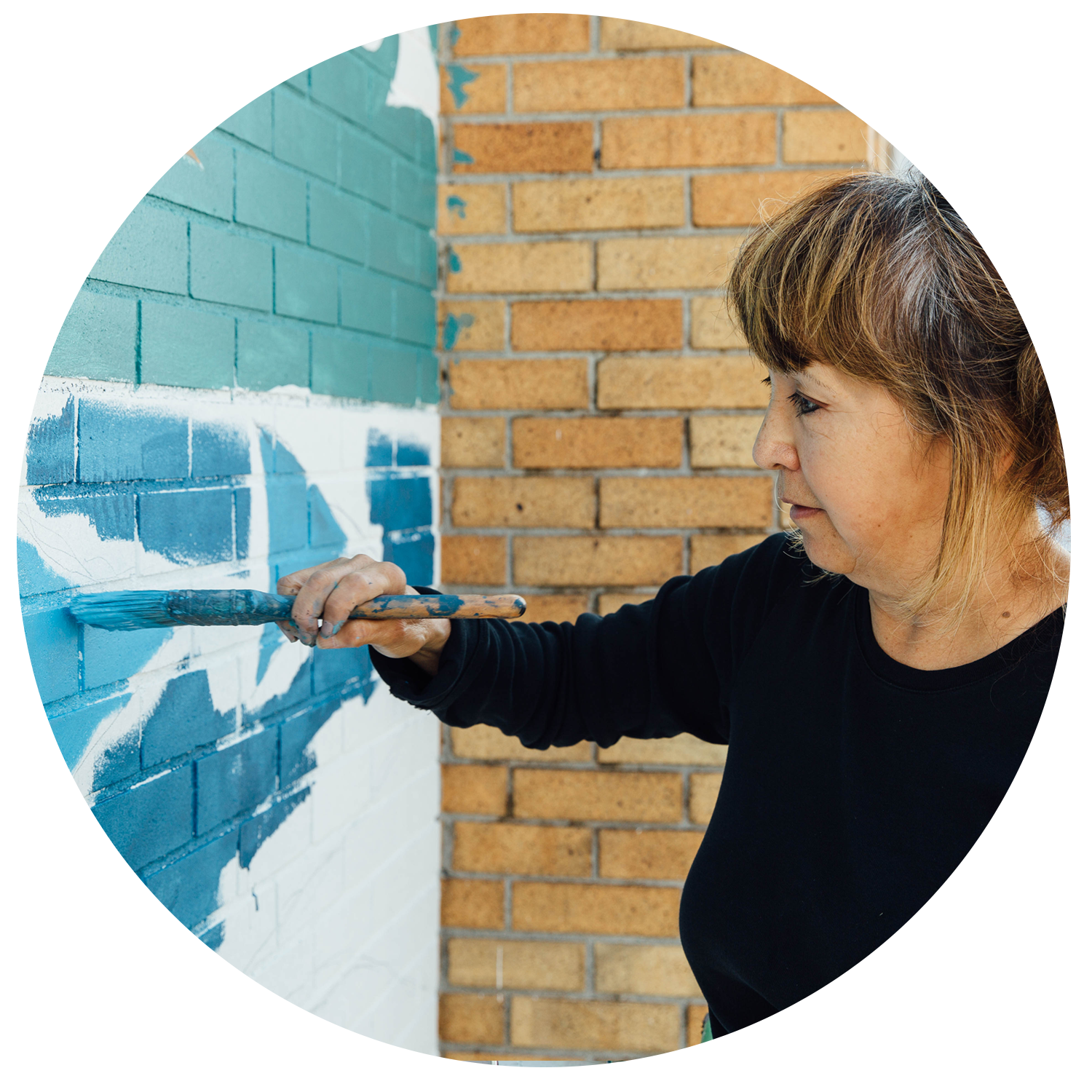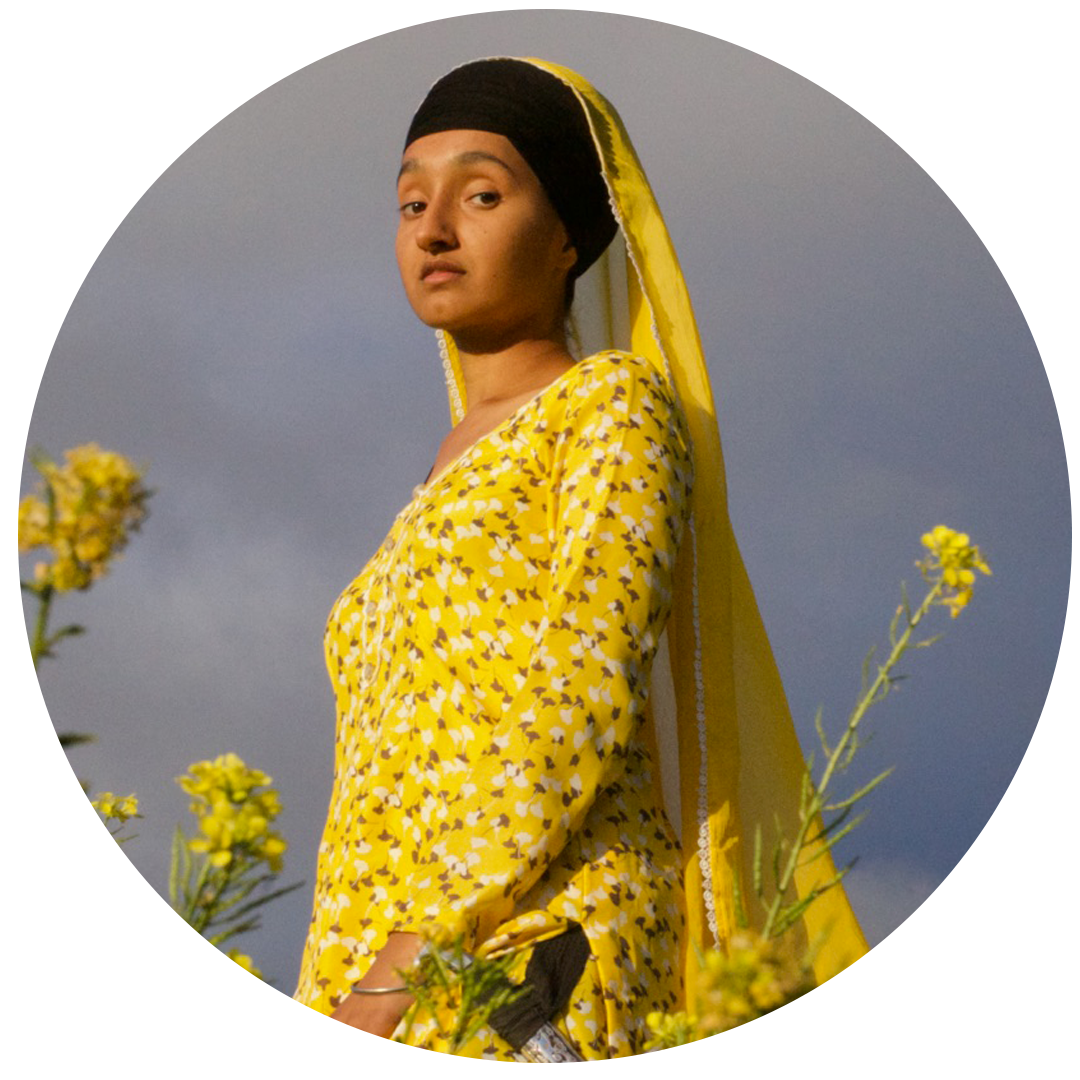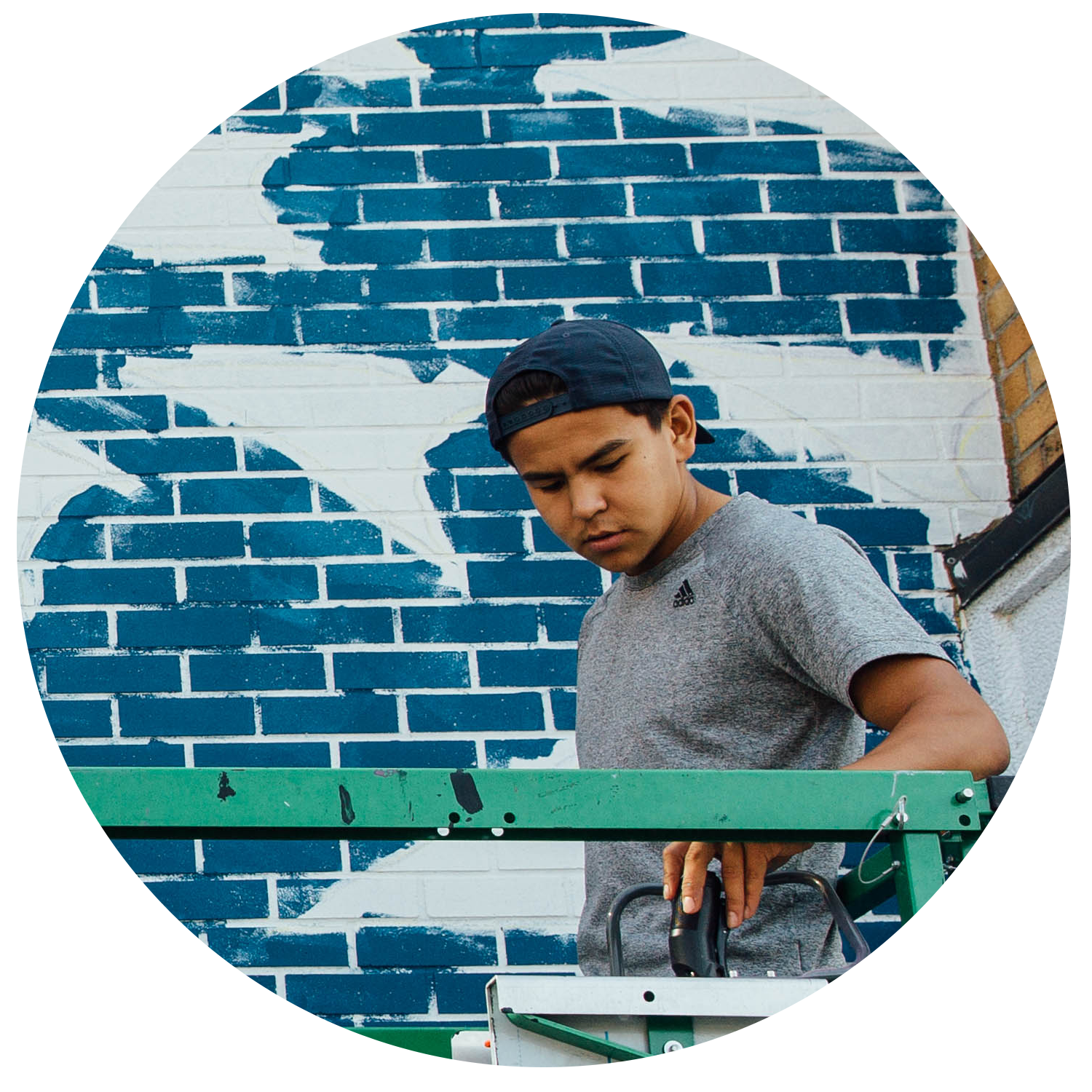-2019.jpeg)
Taike-sye’yə
Musqueam artists Alicia Point and Cyler Sparrow-Point and South-Asian Canadian artists Keerat Kaur, Sunroop Kaur, and Sandeep Johal and historian Naveen Girn produced a collaborative site-specific mural named “Taike-Sye’yə.” This mural centers the commemoration of the Komagata Maru Episode that occurred in 1914 in the Burrard Inlet where 368 predominantly Sikh passengers were denied entrance to Canada based on the newly created “Continuous Passage Law ” designed to block immigration of racialized people into Canada
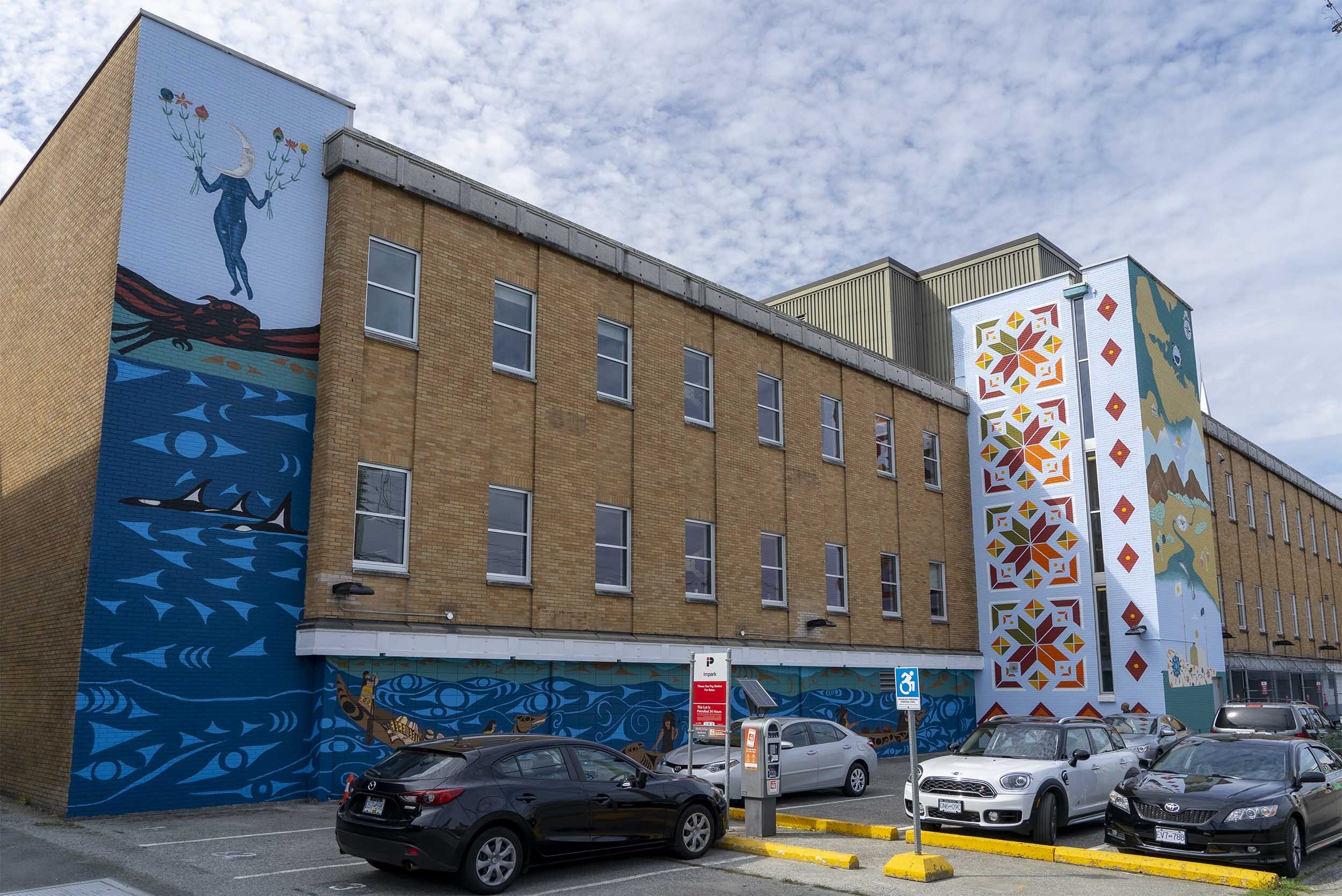
Project Description
The mural’s title, “Taike-Sye’yə” is a combination of a Punjabi word (Taike) and the Musqueam word (Sye’yə) in hən̓q̓əmin̓əm̓. The Punjabi word is related to the word: ‘taiyya’ which denotes a kin relationship, a father’s eldest brother. The word ‘taike’ is derived from this and has a closer affinity to the English word ‘cousin’. It is very common in Punjabi, and more broadly in South Asian, contexts to render personal relationships in familial terms: to describe a relationship through the use of family terms.
The Punjabi word originated in shared working environments and shared experiences between South Asians and Indigenous Nations in BC – and specifically Vancouver. Although there are both positive and negative connotations of the word ‘Taike’ that reflect the complex relationship between Punjabis and Indigenous people in BC and the conflicts that sometimes emerged between them as Punjabis came as settlers to the region, the word ‘Taike’ also holds the possibility of a new understanding of the relationship between South Asians and Indigenous People. That is the spirit of the use of this term in this project.
Historian, Naveen Girn, was also keen for the mural to recount how the local Musqueam people provided mutual aid to the stranded passengers on the Komagata Maru by bringing supplies by canoe. These accounts of aid are part of the oral history held by South Asian elders whom Naveen consulted with for this project. This little known history highlights a historical collaboration between the South Asian community and Indigenous people in the Fraser Valley. This is where the name of the mural comes from.
Look for the word Taike, on one of the canoes. Sye’yə, is a hən̓q̓əmin̓əm̓ word for ‘friend’. Sye’yə was chosen by Alicia Point in collaboration with Larry Grant, her elder from Musqueam as a word that matches well with Taike, and represents the friendship that has formed through experiences depicted in this mural. Very Special thanks Larry Grant, Naveen Girn and Sadhu Binning Ph.D for sharing their knowledge on these words and their origins.
Mural Significance
The collaborative mural transforms 4,000 square feet of the exterior wall of the previously named Harry Stevens Federal Building at 125 East 10th Avenue, Vancouver, into a highly visible public site of remembrance and site for sparking dialogue regarding promotion of cultural redress with Indigenous and South Asian communities. Harry Stevens, the building’s namesake, was a central governmental figure in the denial of the passenger’s entry into Canada during the Komagata Maru Episode. An unexpected, yet hugely beneficial outcome of this collaborative mural project was how the community engagement and eventual completion of the mural influenced the owners of the site to remove the name of the building.
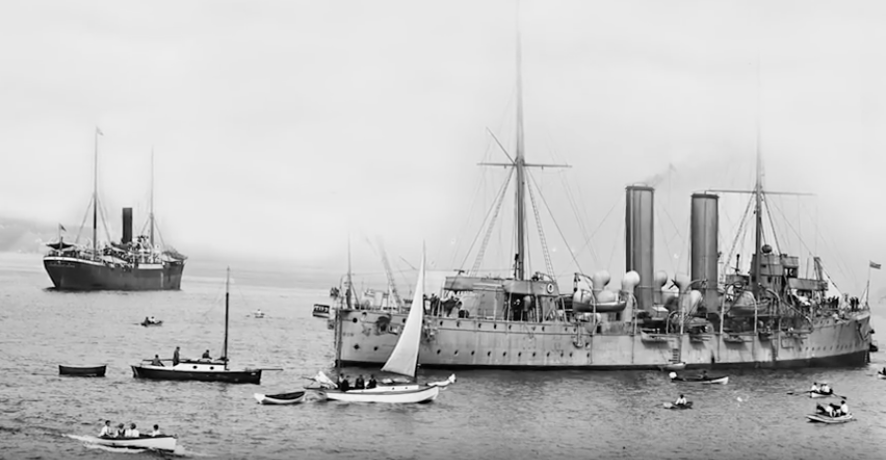
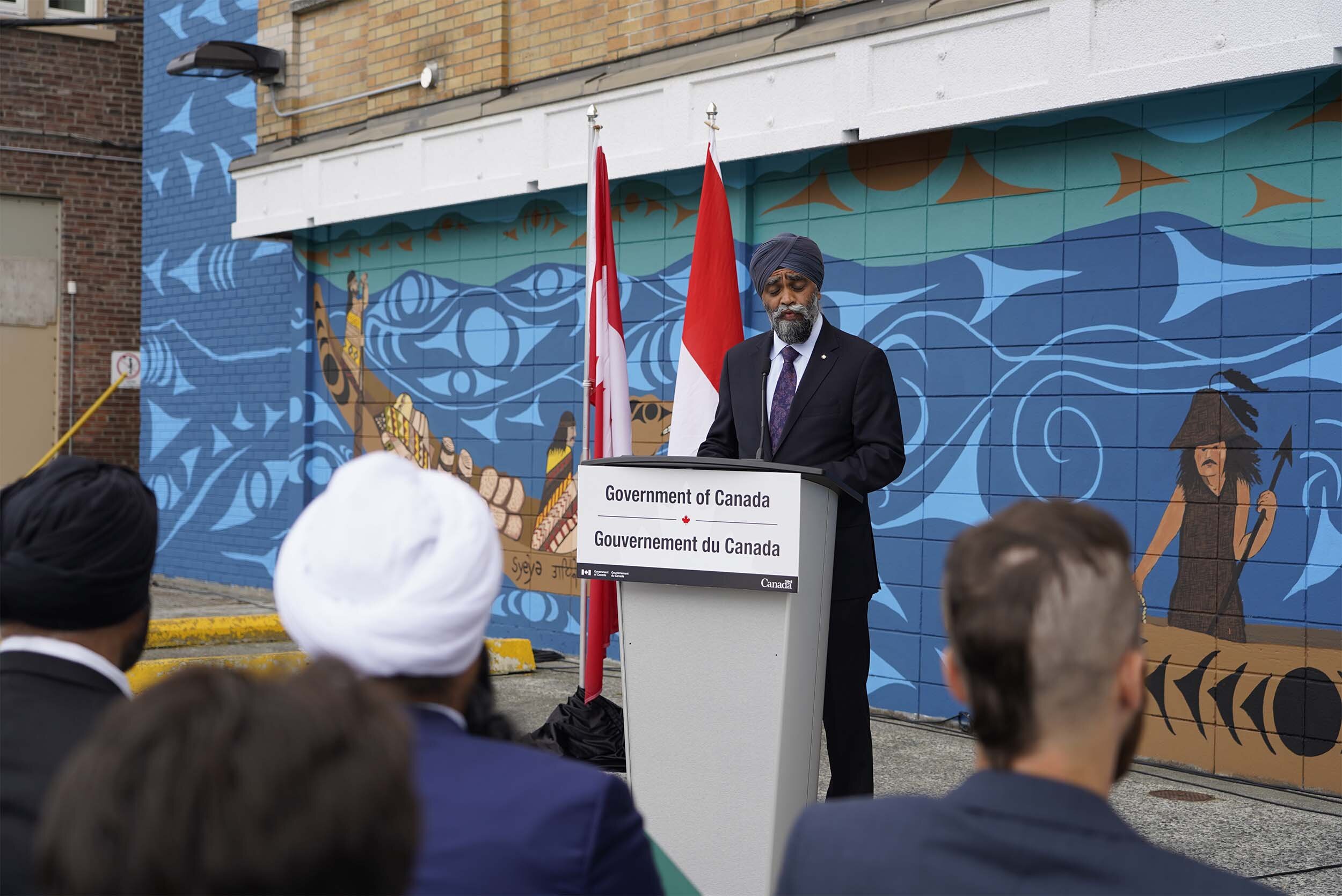
Opening Ceremony
On August 9, 2019, VMF organized a press conference and opening ceremony for the mural that involved Federal Cabinet Ministers, City Councillors, Indigenous and South Asian Elders, Artists, and community members. The de-naming of the building, the importance of telling this story on this building, and the impact of the mural on the members of the community were all addressed.
Meet the artists
Created in partnership with
Naveen Girn, Alicia Point, The Government of Canada, Pooni Group, MPBIA, Keerat Kaur, Jungi Style, The Nameless Collective, Sandeep Johal, Sunroop Kaur, The Indian Summer Festival.


